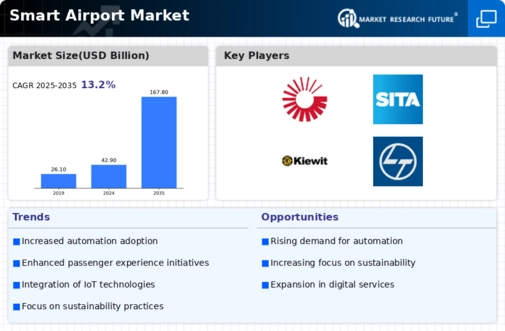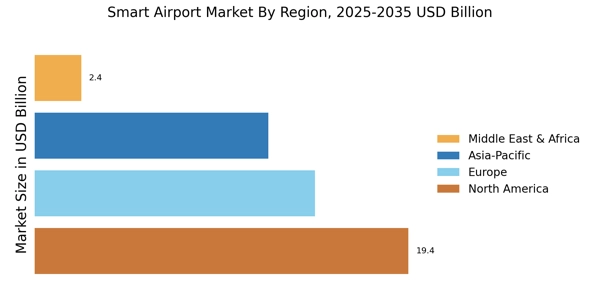Smart Airport Market Summary
As per Market Research Future analysis, the Smart Airport Market Size was estimated at 48.57 USD Billion in 2024. The Smart Airport industry is projected to grow from 54.98 USD Billion in 2025 to 189.95 USD Billion by 2035, exhibiting a compound annual growth rate (CAGR) of 13.2% during the forecast period 2025 - 2035
Key Market Trends & Highlights
The Smart Airport Market is poised for substantial growth driven by technological advancements and evolving passenger expectations.
- North America remains the largest market for smart airports, characterized by significant investments in advanced technologies.
- Asia-Pacific is emerging as the fastest-growing region, with rapid adoption of smart solutions to enhance airport efficiency.
- Security systems dominate the market, while passenger endpoint devices are witnessing the fastest growth due to increasing demand for seamless travel experiences.
- Key market drivers include the rising emphasis on automation and security enhancements, which are crucial for meeting modern passenger needs.
Market Size & Forecast
| 2024 Market Size | 48.57 (USD Billion) |
| 2035 Market Size | 189.95 (USD Billion) |
| CAGR (2025 - 2035) | 13.2% |
Major Players
Siemens (DE), Honeywell (US), Thales (FR), Cisco Systems (US), Amadeus IT Group (ES), SITA (CH), IBM (US), Indra Sistemas (ES), Rockwell Collins (US)


















Leave a Comment